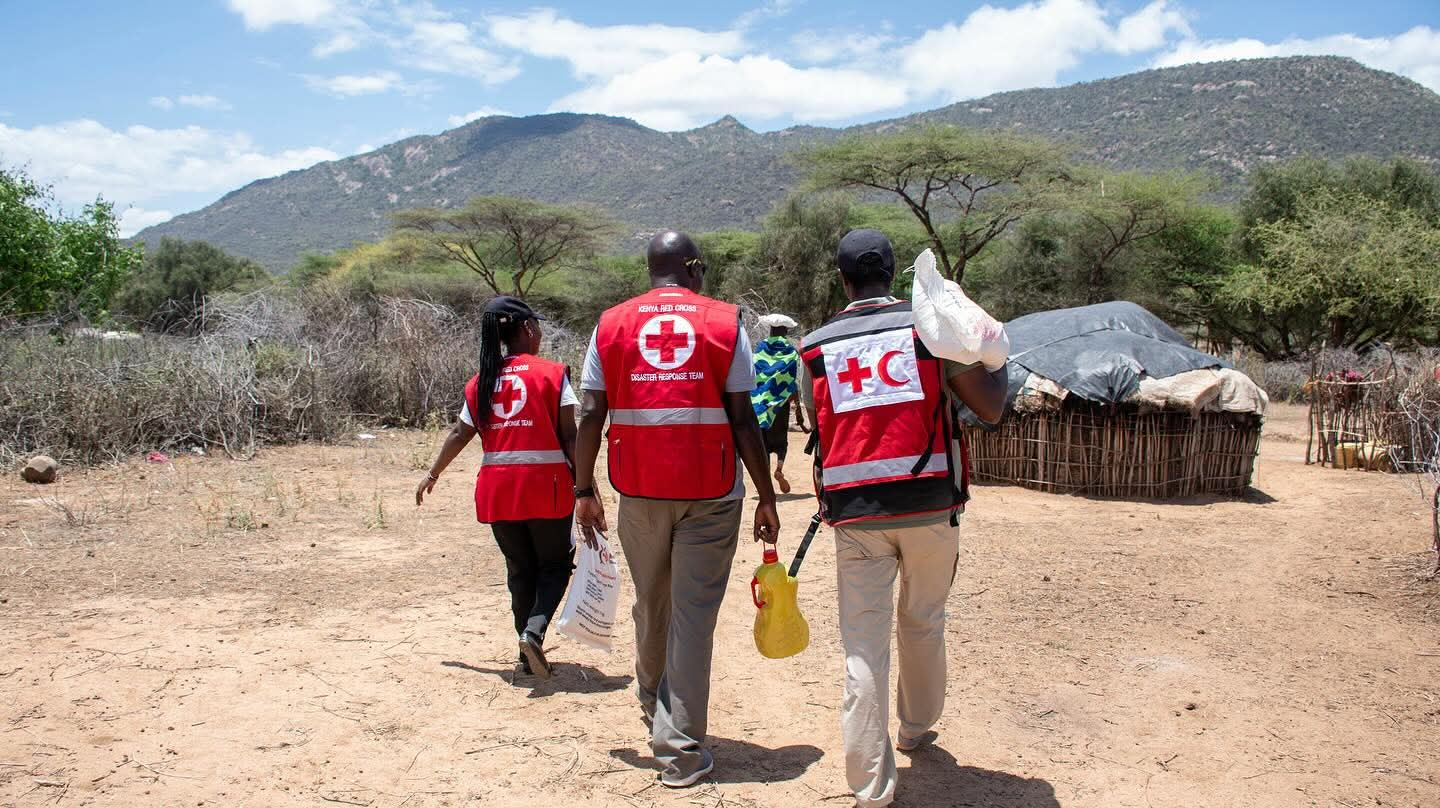As drought tightens its grip on Kenya’s Arid and Semi-Arid Lands (ASAL), families in Marsabit, Turkana, Mandera, Samburu, Baringo, Wajir, and Garissa are grappling with severe shortages of food, water, and health services.
In response, the Kenya Red Cross Society, with critical support from the International Federation of Red Cross and Red Crescent Societies (IFRC) Disaster Response Emergency Fund (DREF), has launched a robust intervention to provide food assistance, medical outreaches, and rehabilitated water points, bringing relief and restoring hope to affected communities.
The Kenya Red Cross has prioritized immediate action to alleviate the suffering caused by the ongoing drought, which has left many households in these seven counties facing dire conditions.
“Many families in Marsabit, Samburu, Turkana, Baringo, Mandera, Wajir, and Garissa are facing the harsh reality of drought. Little food, scarce water, and limited health services,” the Kenya Red Cross reported.
Their response includes distributing food supplies to combat hunger, conducting medical outreaches to address health needs, and rehabilitating water points to ensure access to clean water, critical for both human and livestock survival in these pastoralist regions.
The interventions have provided a lifeline for communities battling the effects of prolonged dry spells, which have decimated livestock, depleted pastures, and strained water resources.
In Marsabit, for instance, rehabilitated water points have eased the burden on families who previously traveled long distances to access water.
In Turkana and Mandera, medical outreaches have delivered essential care to vulnerable populations, particularly children and the elderly, while food assistance has helped avert malnutrition in drought-hit households.
The IFRC’s Disaster Response Emergency Fund (DREF) is a vital financial mechanism designed to enable rapid and effective responses to small- and medium-scale disasters and crises worldwide. Established in 1985, the DREF provides immediate funding to National Red Cross and Red Crescent Societies, like the Kenya Red Cross, to initiate life-saving interventions in the critical early stages of a disaster, before larger-scale funding or appeals can be mobilized.
The fund supports a range of activities, including emergency relief, health services, water and sanitation, and livelihood protection, tailored to the specific needs of affected communities.
It is particularly crucial for addressing sudden-onset crises or escalating situations, such as droughts, floods, or disease outbreaks, where timely action can prevent further deterioration. The DREF operates on contributions from IFRC member societies, governments, and private donors, ensuring a pool of unearmarked funds that can be deployed swiftly.
In the context of Kenya’s drought crisis, the DREF has enabled the Kenya Red Cross to scale up its operations in the ASAL regions, where recurrent droughts have compounded vulnerabilities. The fund’s flexibility allows for targeted interventions, such as the rehabilitation of water points and medical outreaches, which are critical in addressing the immediate needs of drought-affected populations while laying the groundwork for longer-term resilience.
The drought affecting Marsabit, Turkana, Mandera, and other ASAL counties is part of a broader pattern of climate-induced crises in Kenya, where erratic rainfall and prolonged dry spells have become increasingly frequent.
The Kenya Red Cross, in collaboration with county governments and the National Drought Management Authority (NDMA), has been at the forefront of anticipatory action, as evidenced by recent engagements with ASAL county leaders to prepare for a forecasted 90% drought probability in the October-December 2025 season.
These efforts align with the government’s Ending Drought Emergencies framework, which seeks to build resilience through investments in water infrastructure and livelihood support.
The Kenya Red Cross’s interventions, supported by the IFRC’s DREF, underscore the importance of rapid, coordinated responses to mitigate the impacts of drought.
By addressing immediate needs like food, water, and health services, the organization is not only saving lives but also fostering hope among communities facing one of the harshest droughts in recent years.
As the crisis persists, continued support from mechanisms like the DREF will be critical to sustaining these life-saving efforts.

